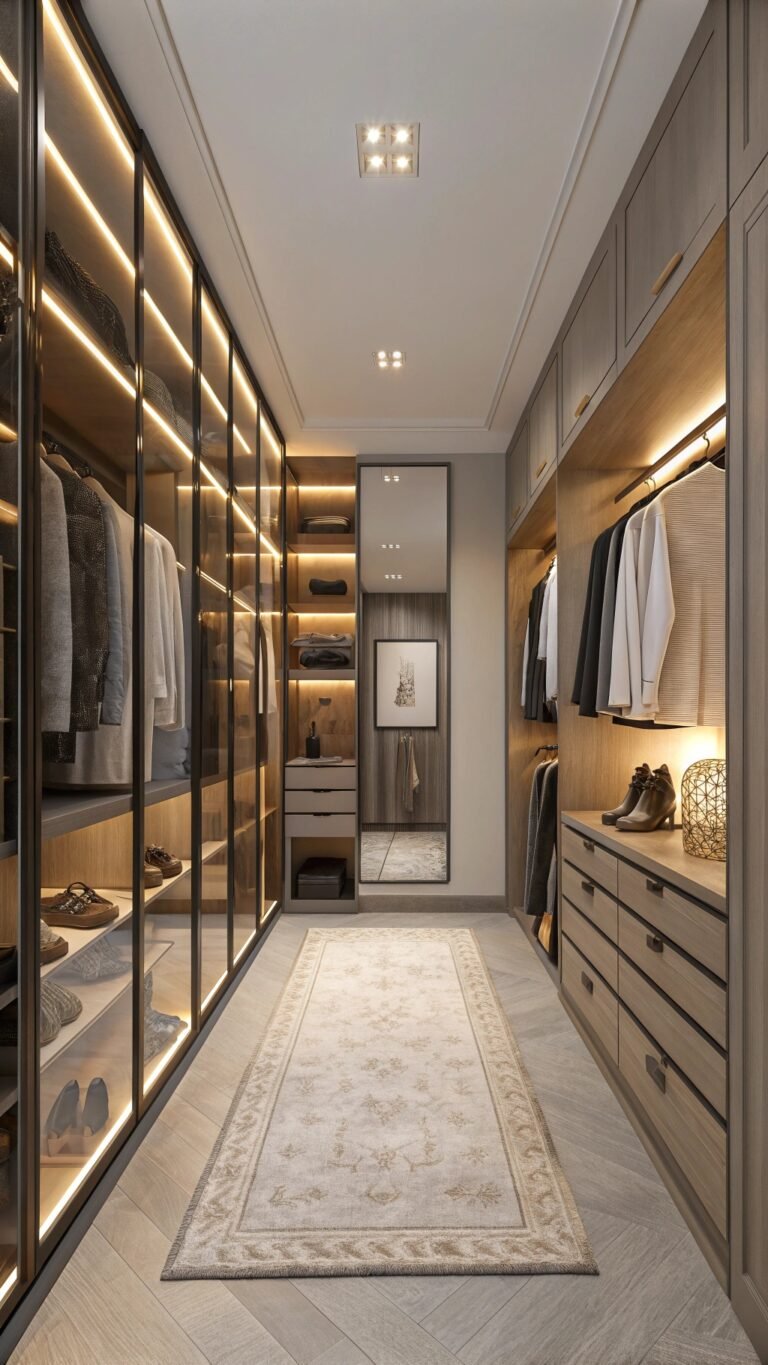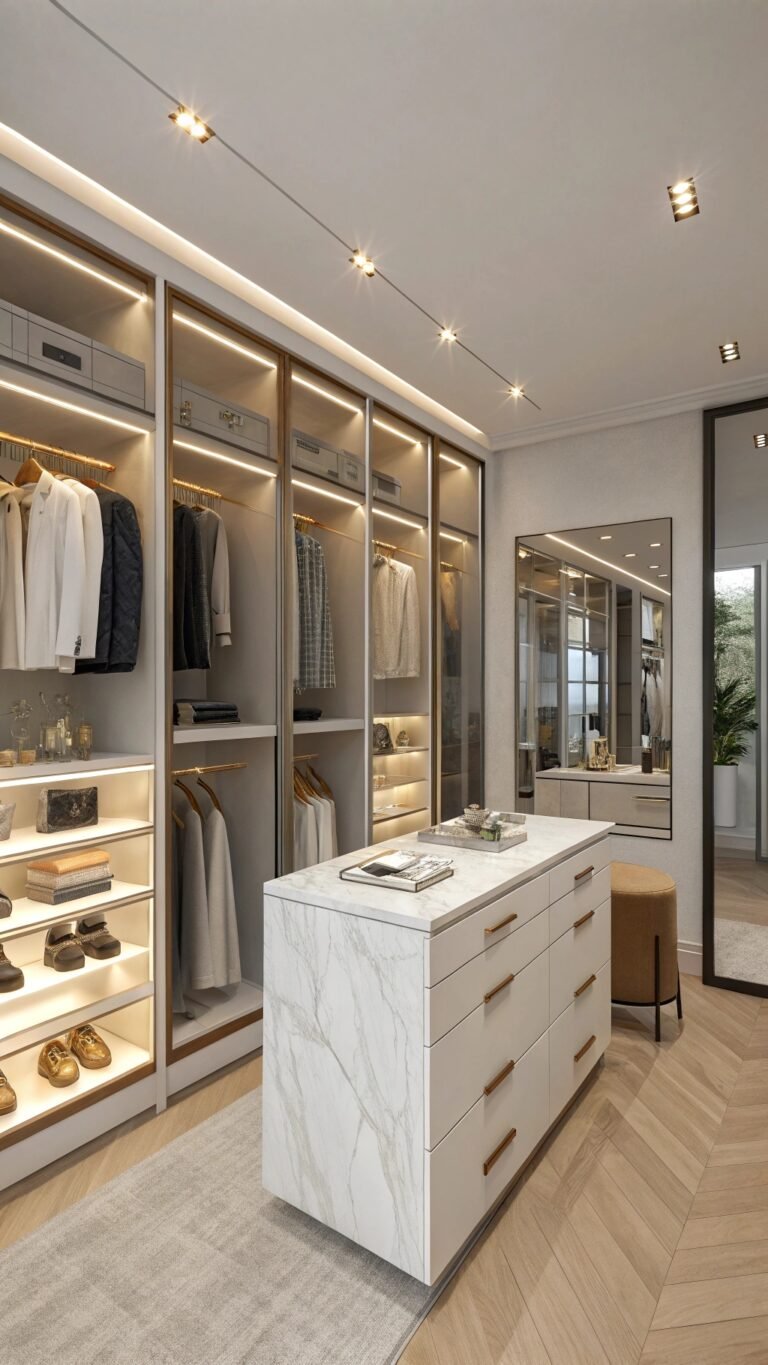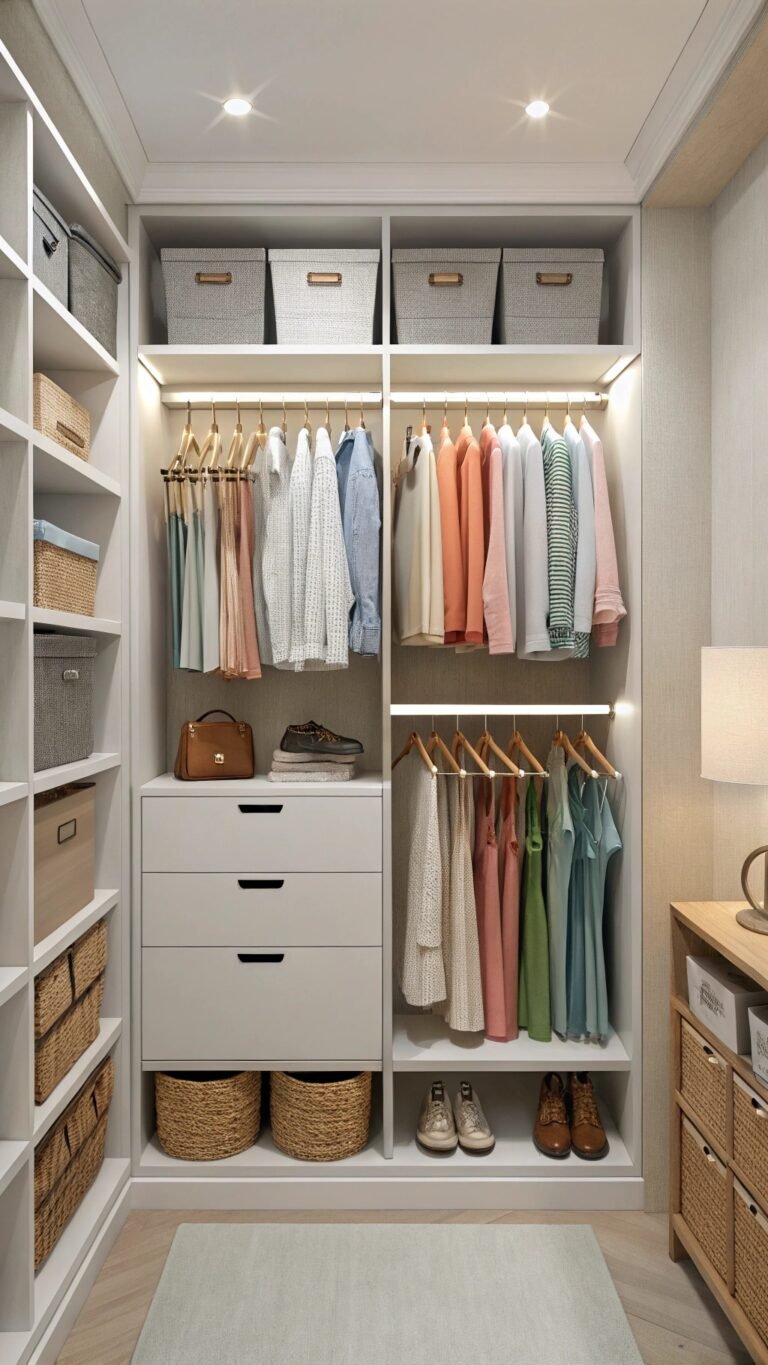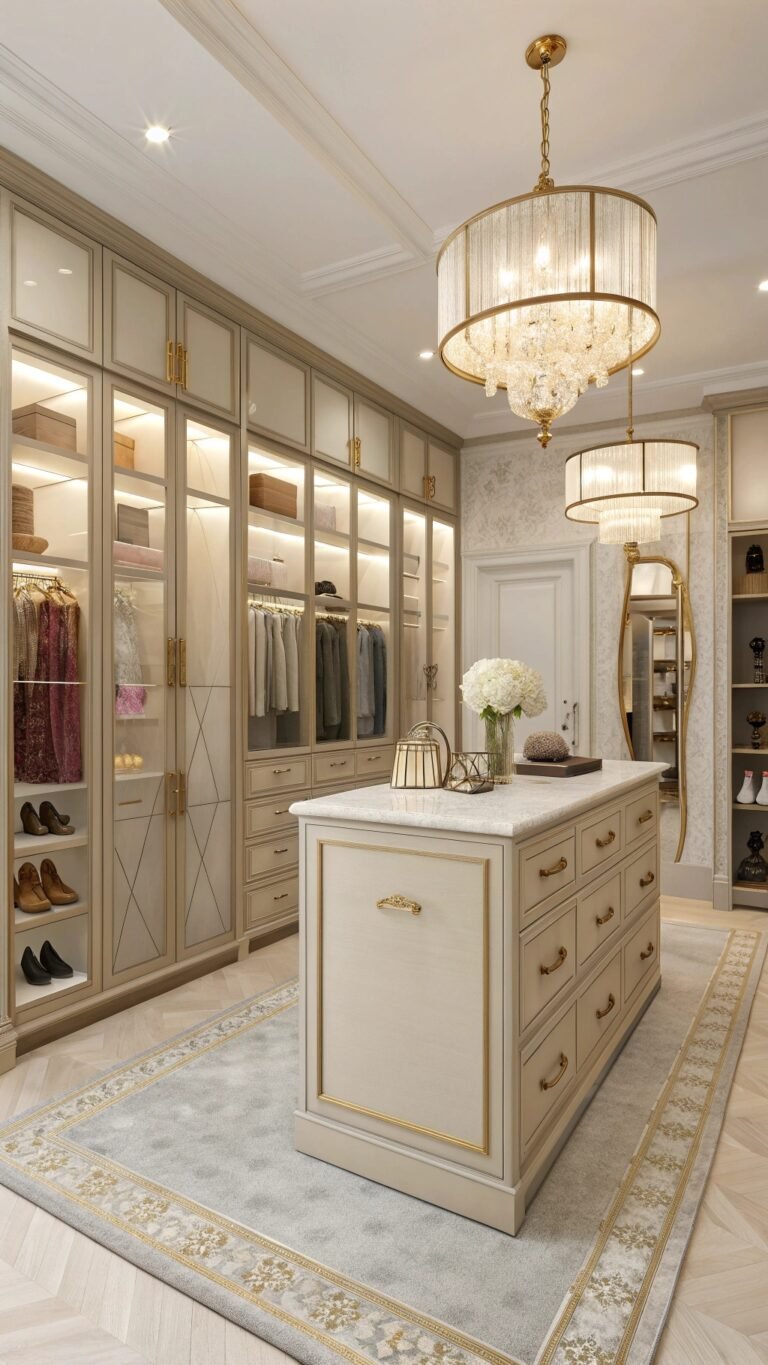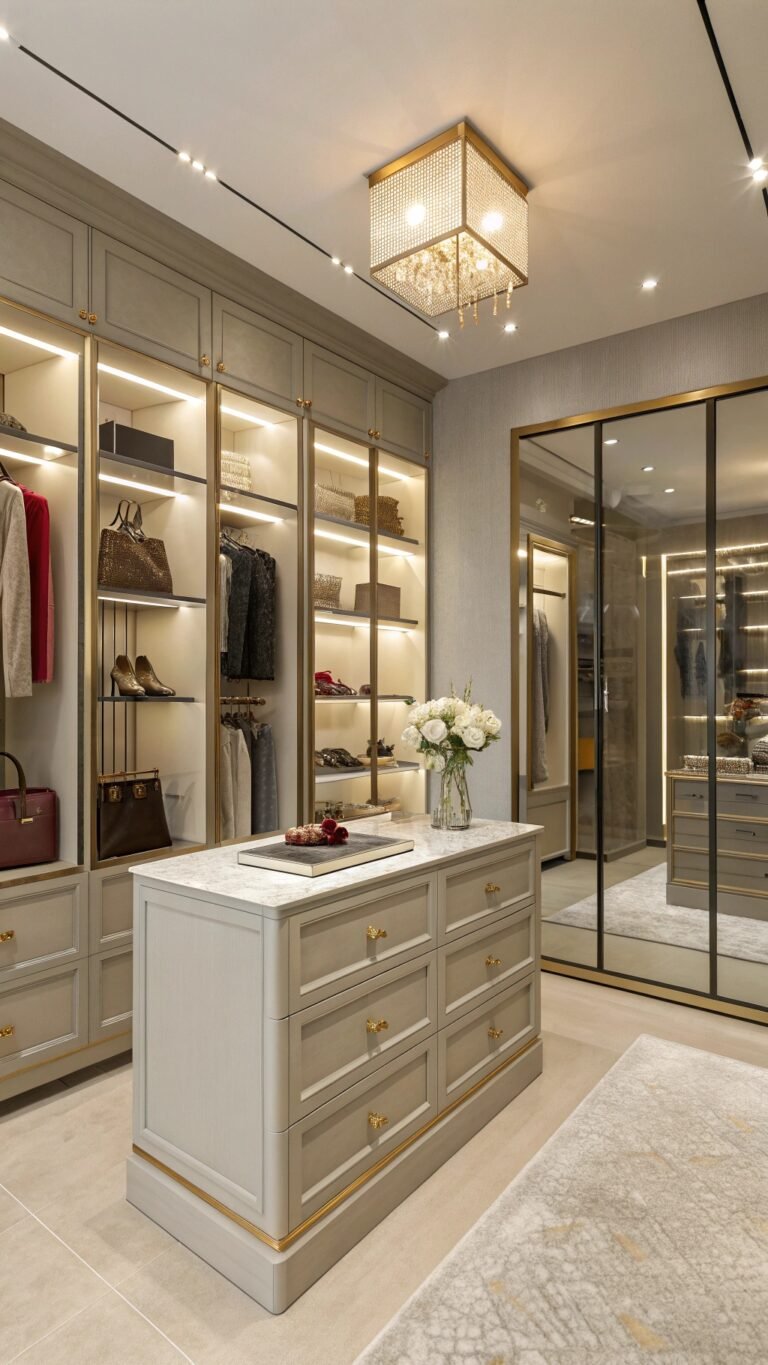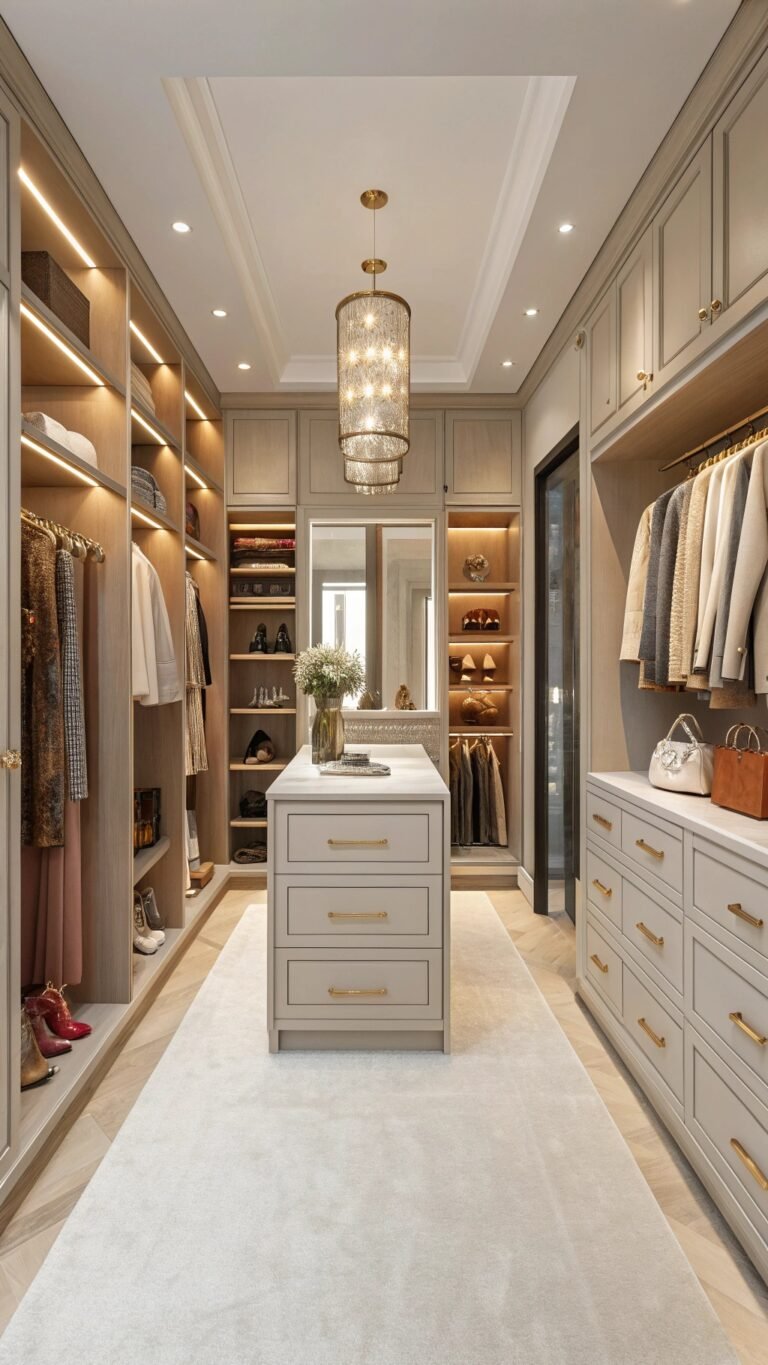Closet Organization Ideas: 14 Smart Systems That Look as Good as They Work
Closet organization ideas are surging because a tidy wardrobe saves time and stress while making bedrooms feel bigger.
Instead of fighting over hangers, people are installing flexible systems, better lighting, and purpose-built inserts that make everything visible and easy to put away.
Try one headline upgrade, add two simple tweaks, and enjoy effortless getting-ready routines.
1) Floor-to-Ceiling Built-Ins
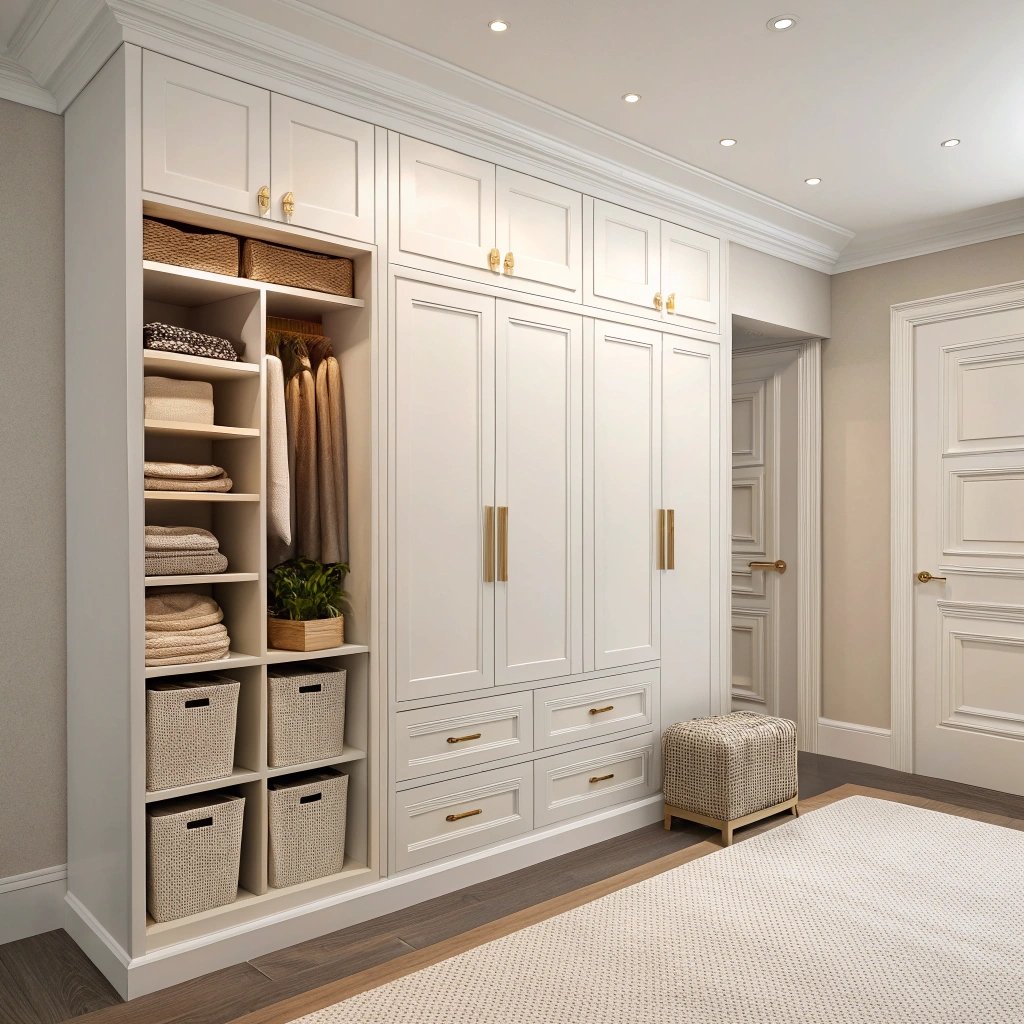
Maximize every centimeter by taking cabinetry to the ceiling. Use a mix of closed cupboards for visual calm and open cubbies for daily grabs.
Deep shelves hold stacks, while full-height panels hide luggage and bulky bedding. A consistent door style makes the whole wall read architectural, not storage-heavy, and reduces dust compared with open rails.
What makes this unique:
Design the top third for long-term storage with lidded, labeled boxes and a fold-down step stool tucked into a narrow slot.
Align door gaps with wall lines and repeat one hardware finish for a tailored look. The built-in approach future-proofs your space and makes seasonal swaps fast because categories already live in logical zones.
2) Double-Hang + Adjustable Rails
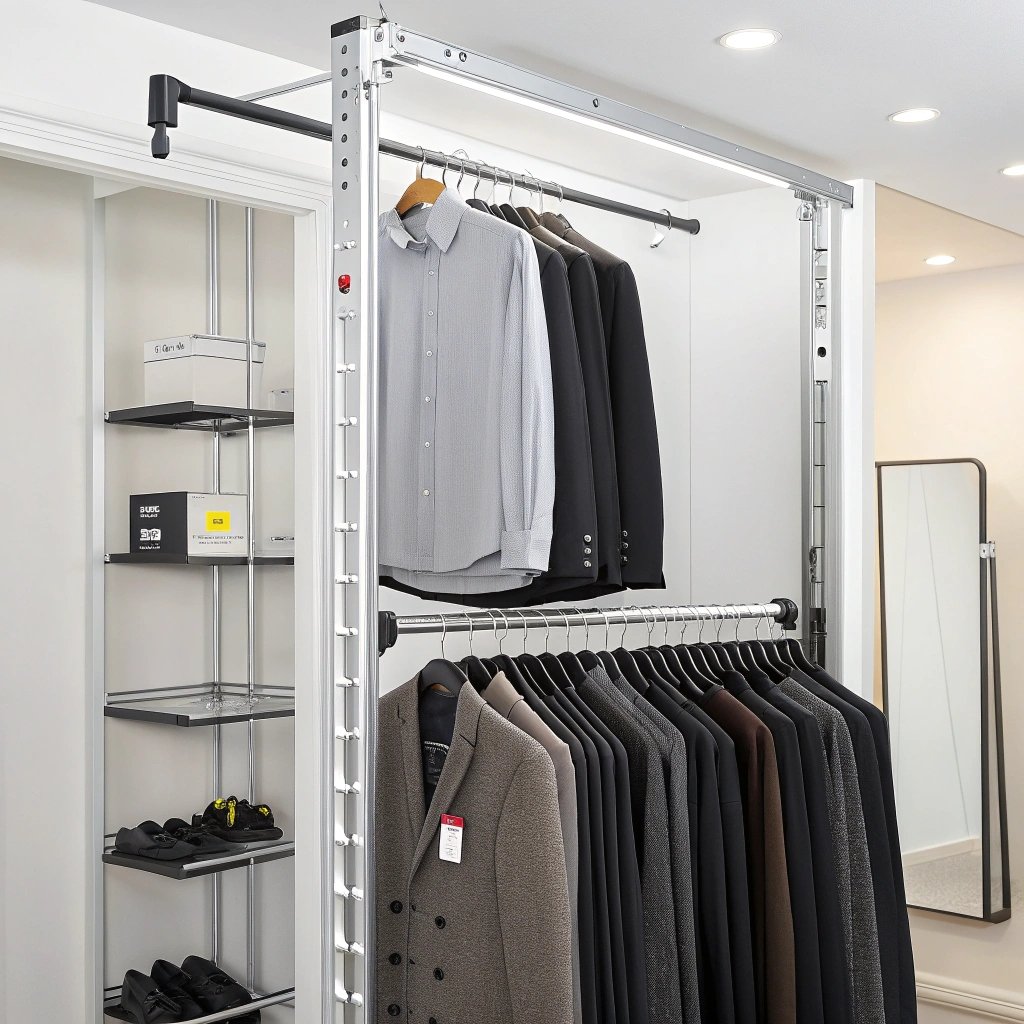
Double up your capacity by installing two hanging levels for shirts and trousers, with vertical standards that let you raise or lower rails as seasons change. Keep one bay single-hang for dresses and long coats.
Slim, flocked hangers maintain uniform spacing and stop garments from slipping, so the closet looks neat even on busy weeks.
What makes this unique:
Add a pull-down wardrobe lift in the upper bay so high rails are easy to reach, and mark positions with discreet measurement stickers inside the uprights.
A color-coded set of hanger clips for outfits-in-progress turns your closet into a staging area. Adjustability means your system adapts to wardrobe shifts without new carpentry.
3) Drawer Dividers That Actually Fit
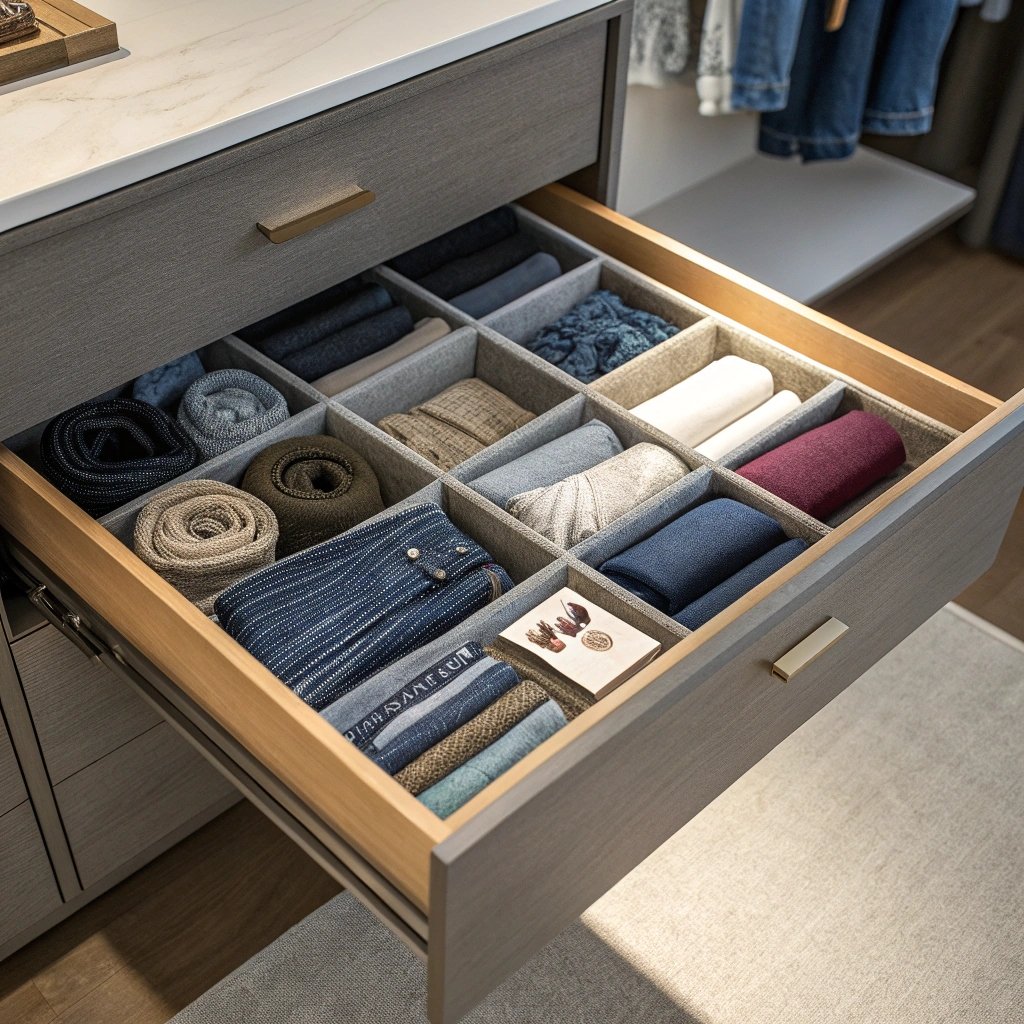
Drawers stop being junk zones when compartments match your items. Combine modular trays for socks, underwear, silk scarves, and athletic gear.
Use shallow drawers for accessories and deeper ones for denim and knitwear. A simple front-to-back spacer keeps stacks from falling over, so the top view stays tidy and you can grab in seconds.
What makes this unique:
Line drawers with washable felt or cork to cushion fabrics and quiet movement. Create a “reset” card per drawer showing the intended layout; it slips under the front tray and makes sharing the closet painless.
Matching dividers throughout reinforce visual order and make laundry put-away a brainless two-minute task.
4) Vertical Space: Shelf Risers & Overhead Bins
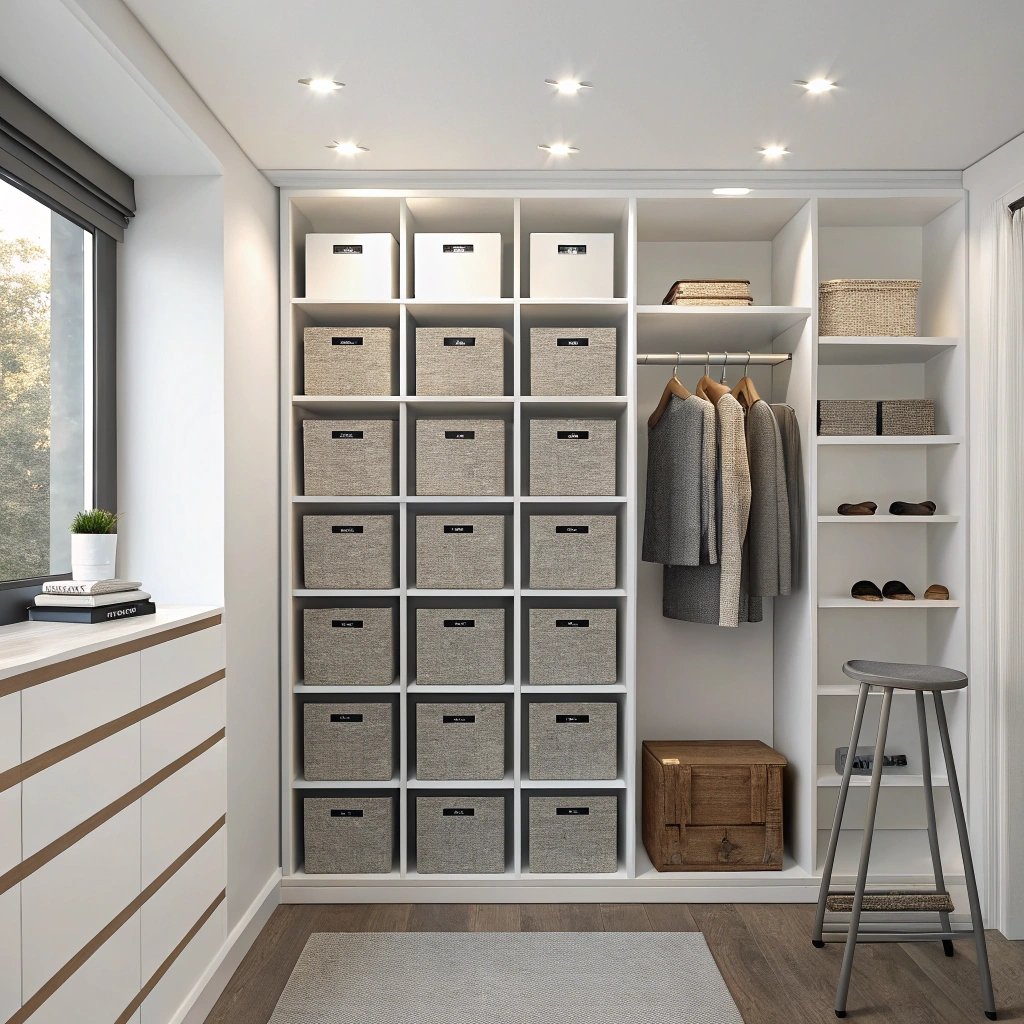
Most closets waste the top third. Install shelf risers to stack more without crushing knits, then use uniform bins for off-season pieces. Clear fronts or photo labels show contents instantly.
A narrow front ledge prevents boxes from shifting, while a long handled grabber or slim step stool makes retrieval safe and quick.
What makes this unique:
Standardize box sizes to grid the view and keep replacement simple. Add a ceiling-mounted rail to tether lightweight bins so they slide forward but never fall.
With defined real estate for “rarely used,” your eye focuses on daily items and decision fatigue drops dramatically.
5) Shoe Wall with Pull-Out Trays
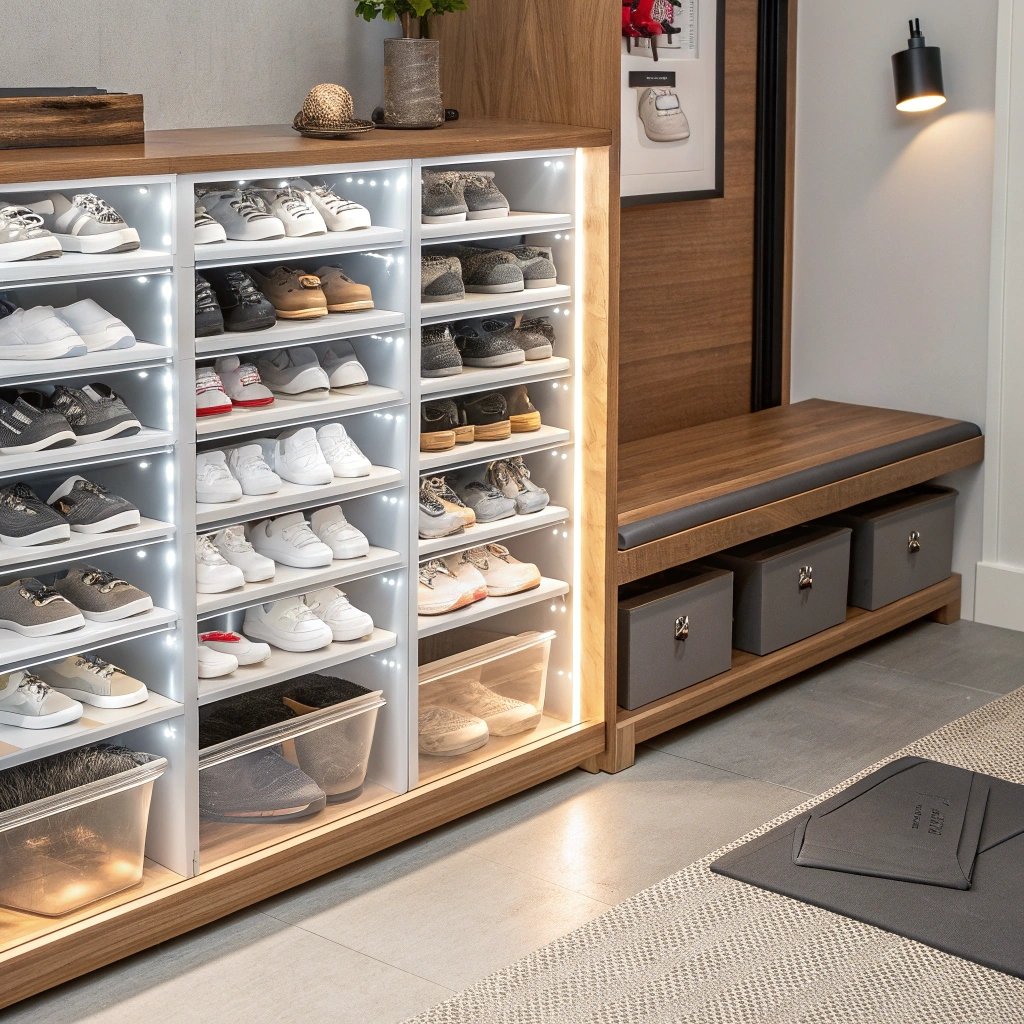
Turn shoes into a gallery. Shallow shelves or pull-out trays keep pairs front-facing and ventilated. Alternate heel-to-toe for more capacity.
Boots sit upright with clip shapers; sneakers stack in clear front-opening boxes that protect yet display. The wall becomes a focal point and ends the “lost shoe” scramble.
What makes this unique:
Divide the wall into “daily,” “seasonal,” and “special” zones so swaps are instant. Add a low bench with a hidden tray for shoe-care kit and a mini mat for muddy soles.
The pull-out action helps you clean and cull quickly because everything’s visible at once.
6) Back-of-Door Genius
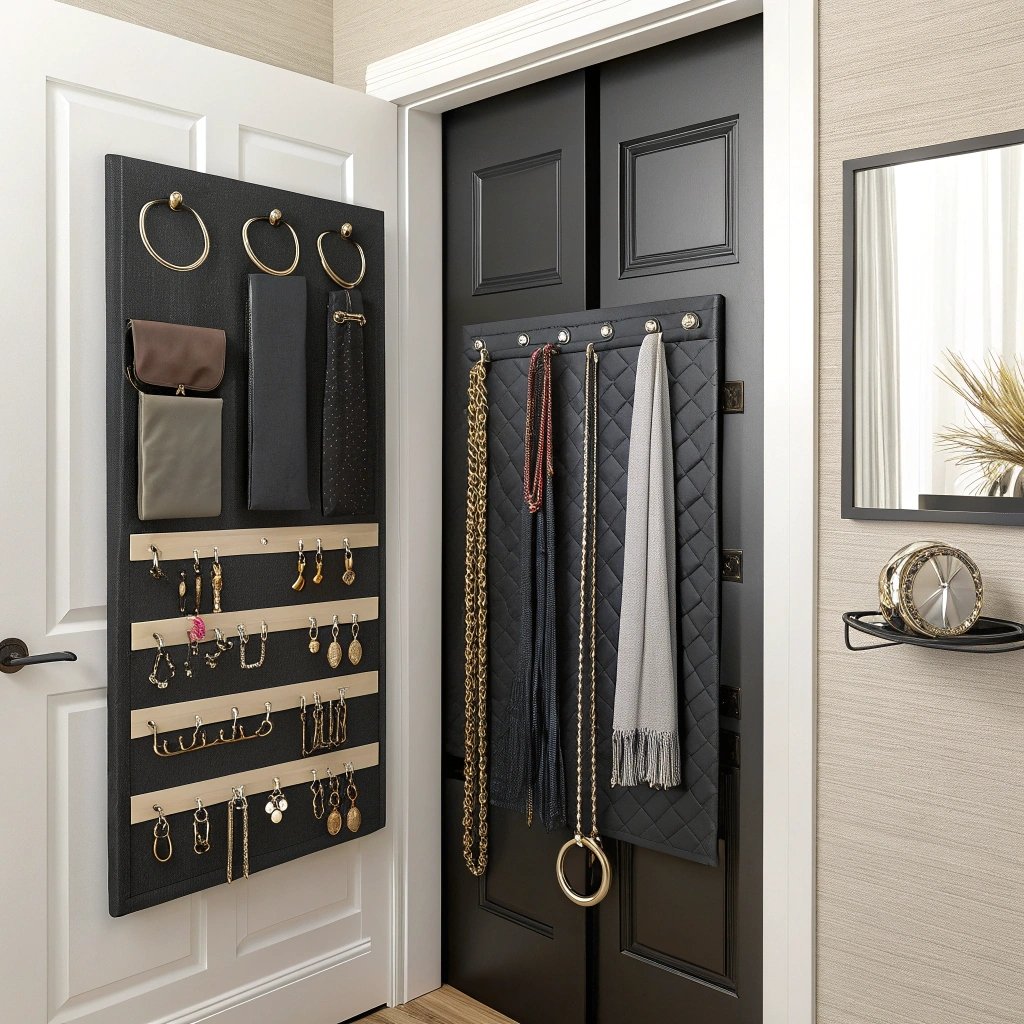
Doors are prime real estate. Mount shallow racks for clutches, belts, and scarves; add a slim mirror inside one door to check proportions before stepping out. Magnetic strips hold brooches and metal hair clips.
Keep depths minimal so doors close cleanly and nothing swings loose when you move items around.
What makes this unique:
Use interchangeable clip panels—belt hooks today, cap loops tomorrow—so the system evolves. A concealed damper keeps doors from slamming and protects hardware.
Because categories live on doors, you gain a dashboard view at a glance without adding bulk to shelves or rails.
7) Seasonal Rotation & Color Coding
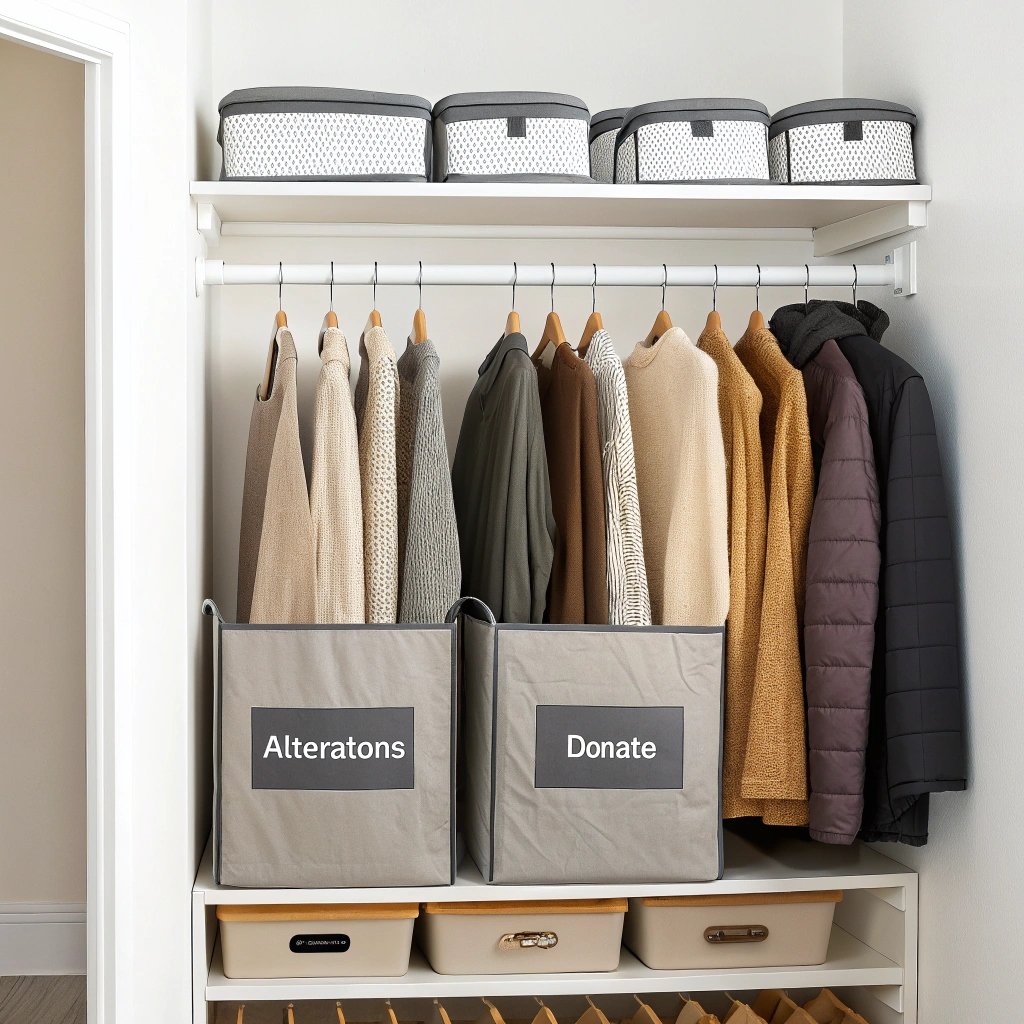
Organize by season and hue for instant clarity. Keep in-season items at eye level, off-season in labeled bins up top.
Within each category, sort light-to-dark; your brain finds pieces faster, and outfits coordinate with less effort. Set a calendar reminder to rotate quarterly to keep the closet feeling fresh.
What makes this unique:
Use reversible labels—“Spring/Summer” on one side, “Fall/Winter” on the other—and store them in the same bin they describe.
Add two slim garment bags: one for “alterations,” one for “consign/donate,” so decisions happen in real time. Color coding doubles as visual styling and inventory control.
8) Capsule Wardrobe Zones
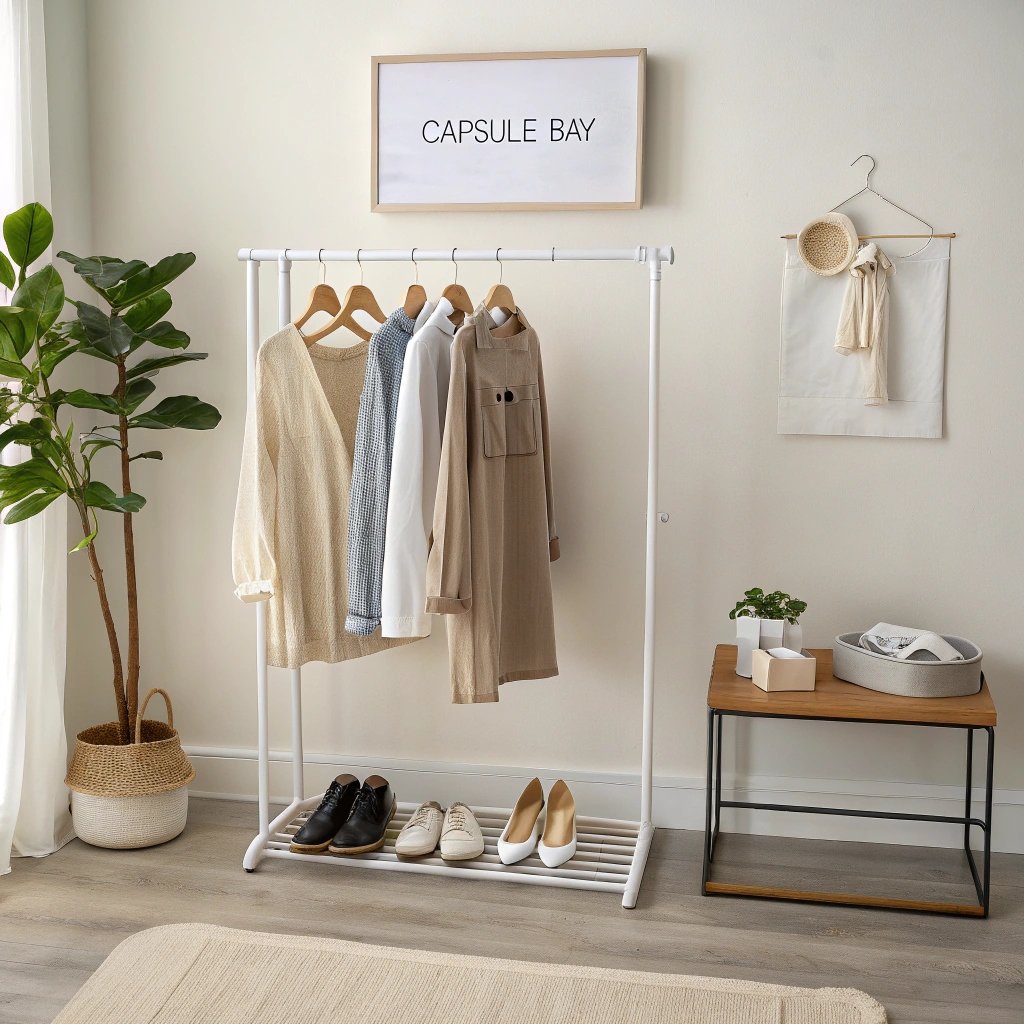
Curate go-to outfits in a dedicated bay: a week’s worth of mix-and-match tops, bottoms, and layers.
Keep a slim shelf for shoes that work with everything and a tray for jewelry you actually wear. This micro-closet reduces morning decisions; the rest of the wardrobe becomes optional rather than overwhelming.
What makes this unique:
Create outfit bundles with colored hanger tags (Mon–Sun or Work/Weekend). A small whiteboard lists combos you love, so repeating great looks is intentional, not accidental.
The capsule zone evolves each season without rethinking the entire closet—maximum style with minimal friction.
9) Lighting Layers & Sensors
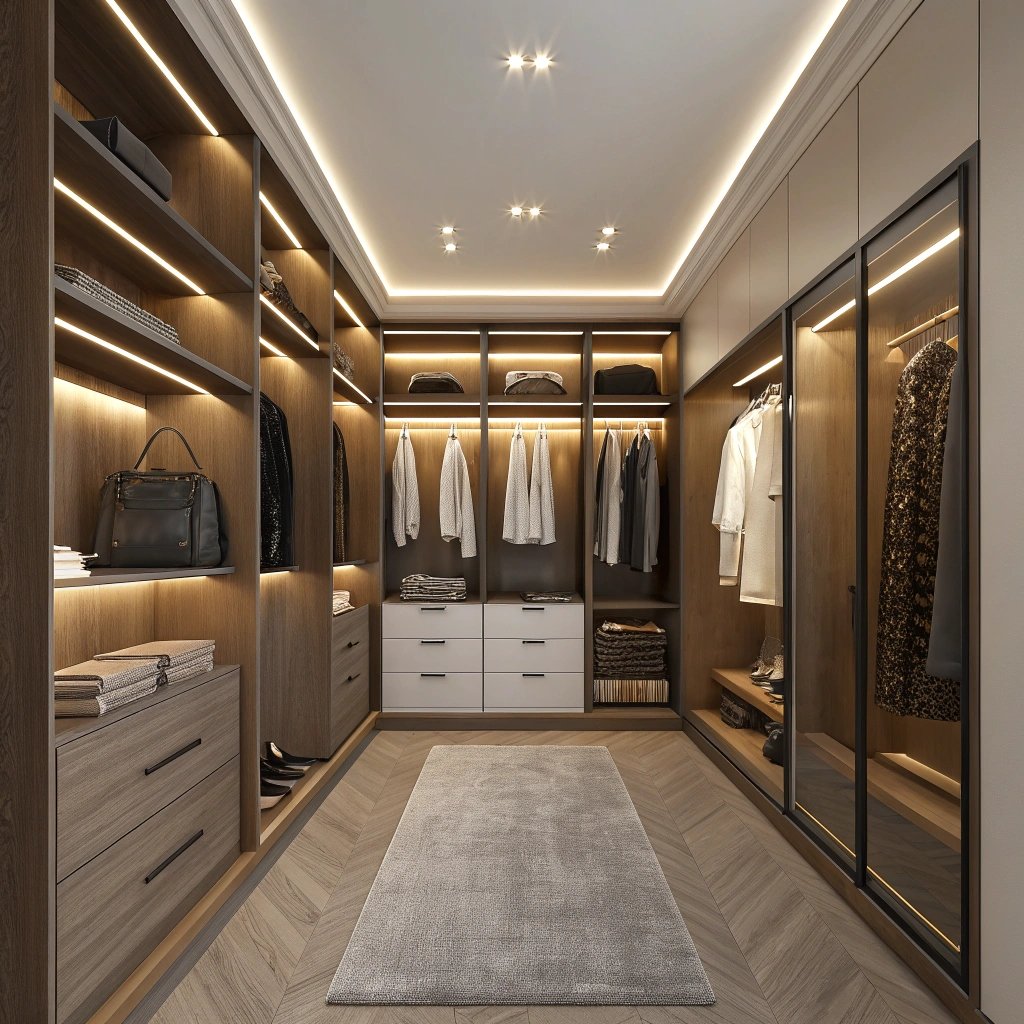
Great closets glow in layers: ceiling ambient, vertical strip lights on uprights, and drawer LEDs that activate on open. Warm temperatures (3000K) flatter fabrics and skin.
Motion sensors mean lights just work, hands-free, while toe-kick LEDs help for early mornings without waking anyone else.
What makes this unique:
Graze light down textured doors for a boutique feel and add a tiny picture light over the accessories shelf. Smart dimmers recall scenes (pack, dress, clean-up) so everything looks intentional.
Good lighting makes edits easier and reduces duplicates because you can finally see what you own.
10) Small Reach-In, Big Payoff
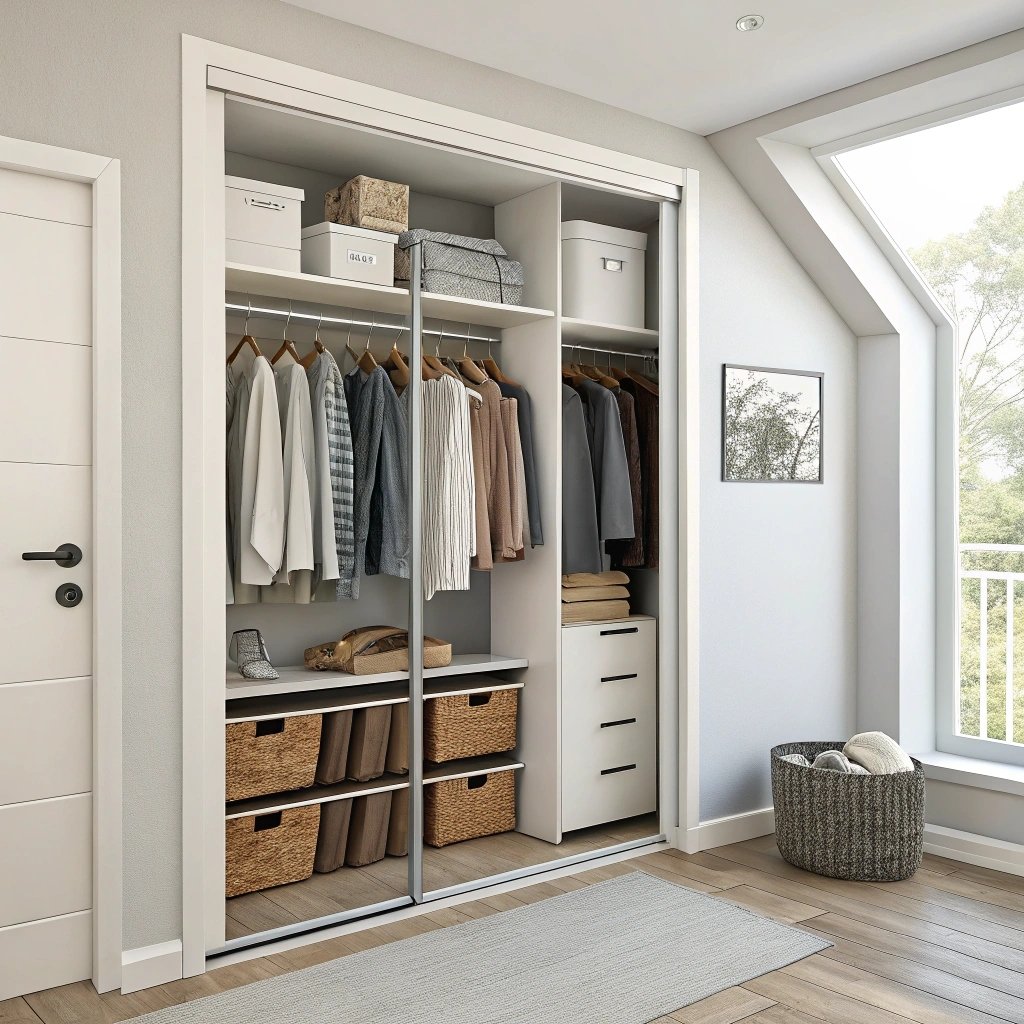
Short on depth? Use a tri-level approach: upper shelf with uniform bins, mid rail with slim hangers, and a lower pull-out for shoes.
Swap swinging doors for space-saving sliders or curtains. A central valet hook handles outfit prep without blocking access, and a mirror panel bounces light back into the niche.
What makes this unique:
Install side-mounted pull-out racks for belts and ties that fit a shallow cavity. A fold-down ironing pad attaches inside, popping out only when needed.
Thoughtful hardware makes a standard reach-in function like a mini boutique—compact, clear, and quick to reset.
11) Walk-In with Island
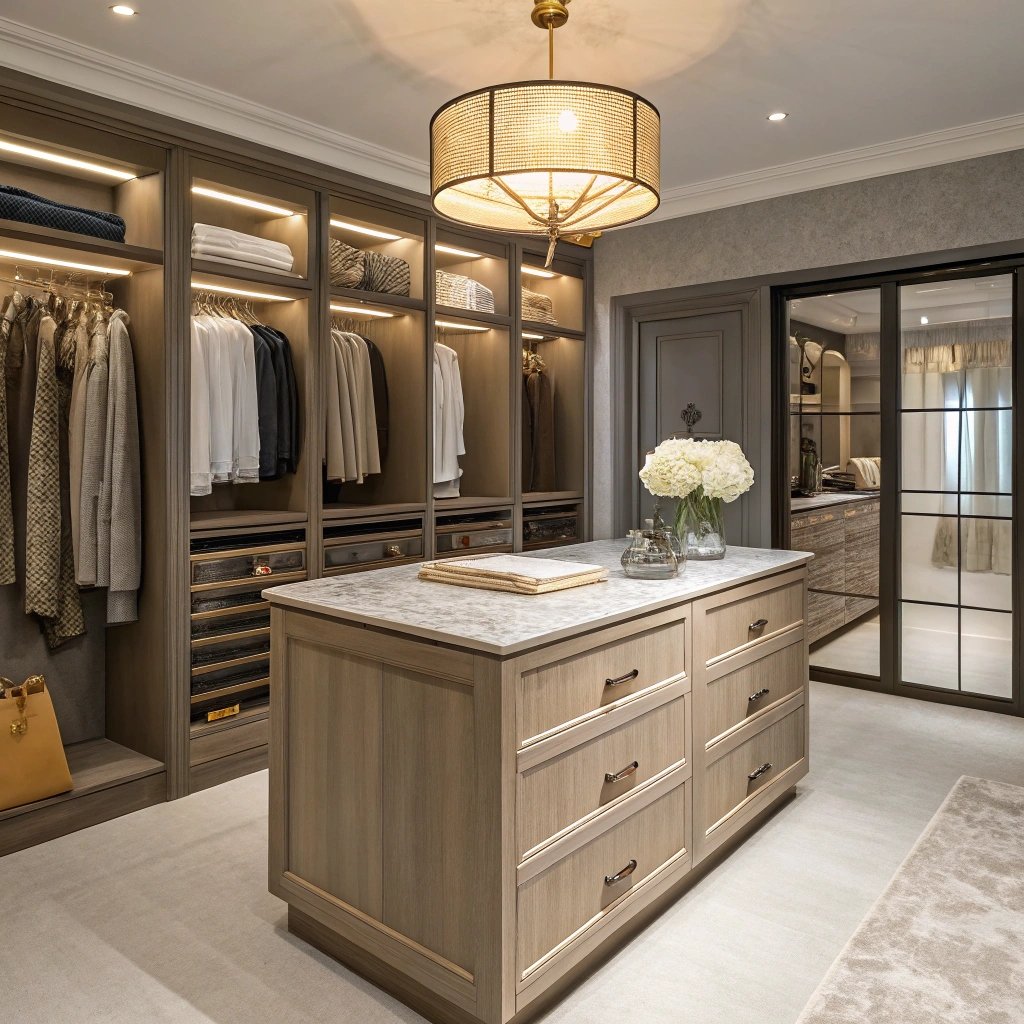
If you have the space, a small island anchors the room and adds drawers for intimates, tees, and accessories.
The counter becomes a true staging zone for packing or steaming. Surround with a balance of single- and double-hang bays, plus a tall tower for long pieces so silhouettes don’t crowd each other.
What makes this unique:
Add soft-close velvet-lined jewelry drawers and a hidden outlet inside the island for steamer and lint shaver. A tray system on top keeps returns, tags, and tailoring tickets tidy.
The island turns the walk-in from storage into a dressing room that supports real routines.
12) Accessories Station: Jewelry, Belts, Hats
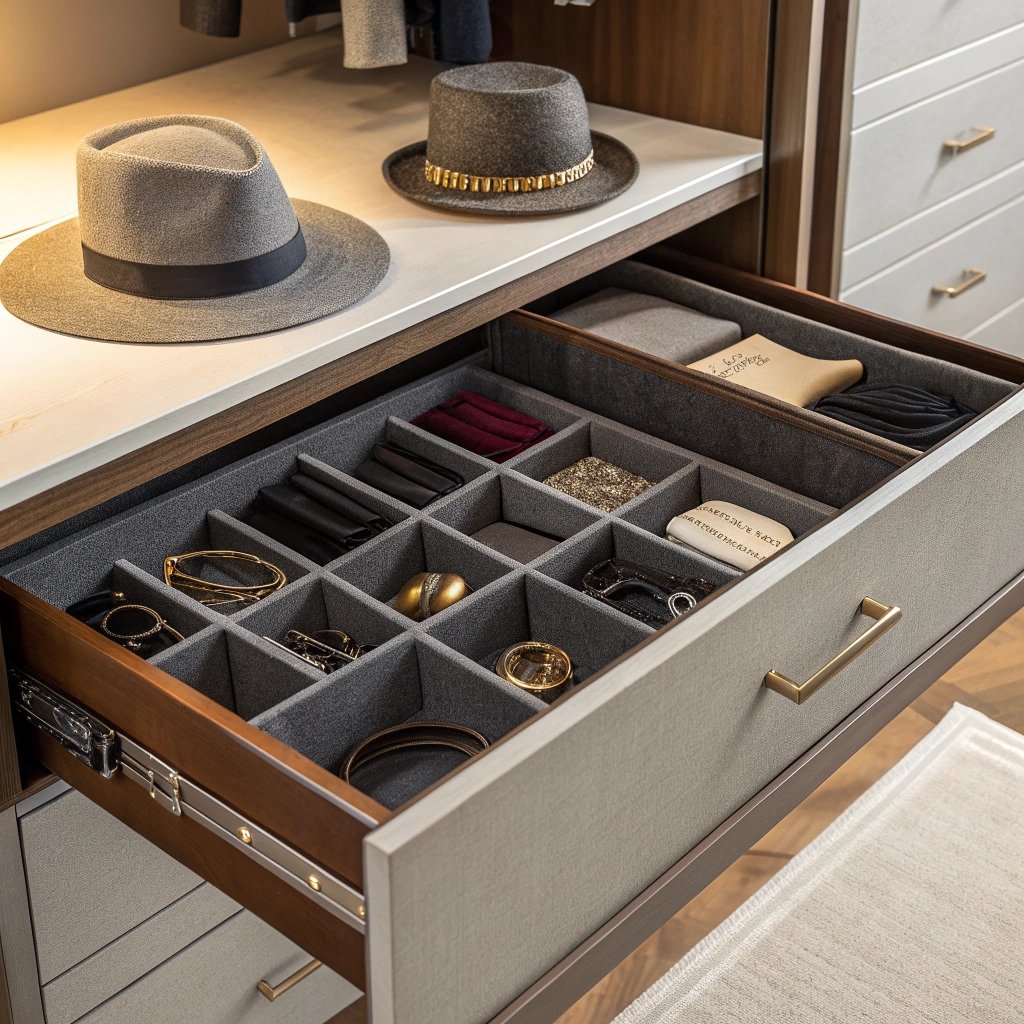
Give small items a home so they stop scattering. Shallow drawers with sectional liners corral rings and watches; felt-lined trays prevent scratching.
Install peg caps for hats and structured bins for clutches. A narrow pull-out panel with hooks keeps belts and ties flat, visible, and wrinkle-free.
What makes this unique:
Label drawers by category and frequency (Daily / Occasional) to speed decisions. Add a mini mirror and soft brush for jewelry care, plus silica packets in hidden corners to keep moisture down. When accessories are easy to scan, you actually wear them—and outfits feel finished.
13) Built-In Laundry Logic
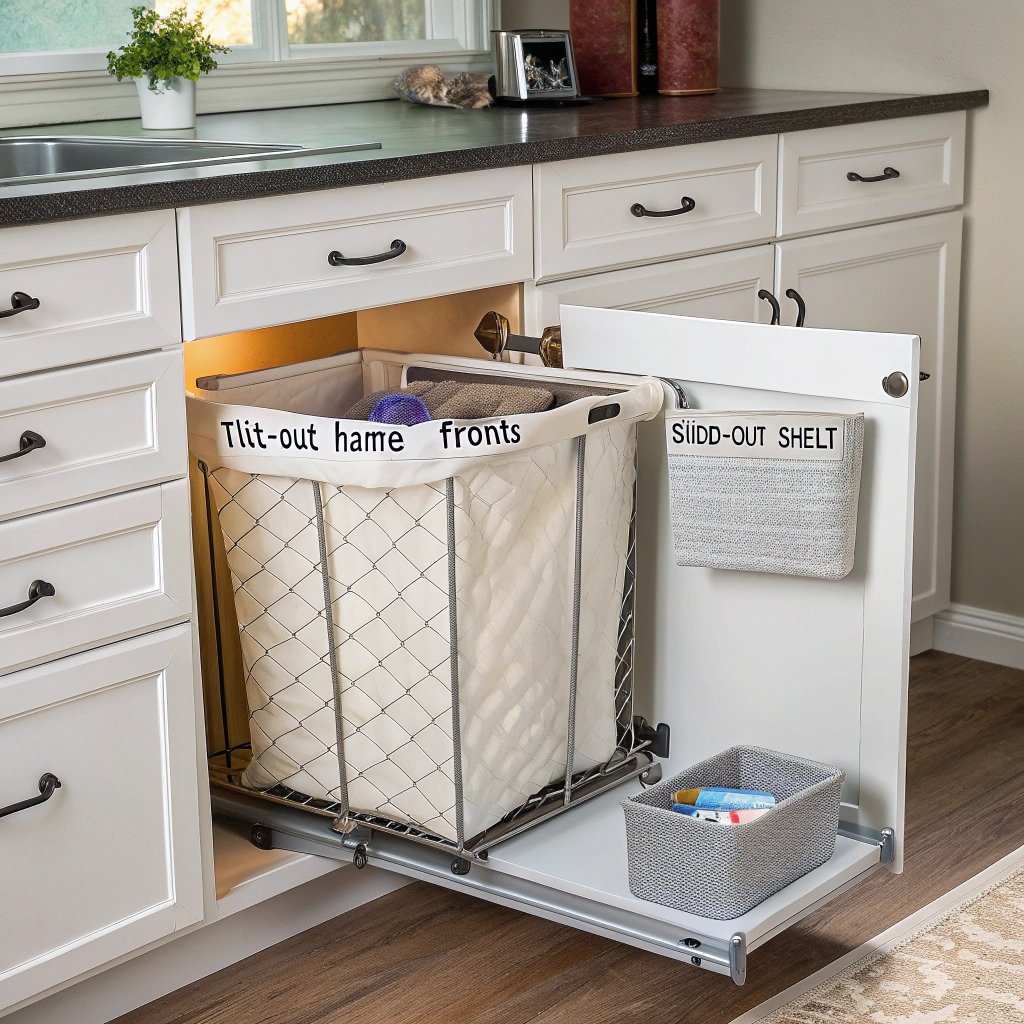
Integrate hampers where you change: tilt-out bins labeled Lights, Darks, Delicates right beneath the hanging bay.
A slide-out shelf above becomes a folding perch or “laundry staging” area. Keep mesh bags for delicates on a hook and a small caddy for stain sticks so action happens at the source.
What makes this unique:
Color-coded, removable bags lift straight to the machine. Add a timer switch nearby to nudge you to finish cycles, plus a narrow drawer for spare buttons and sewing kit. Treat laundry like part of the closet flow and piles stop forming on chairs.
14) Shared or Kids’ Closet That Grows
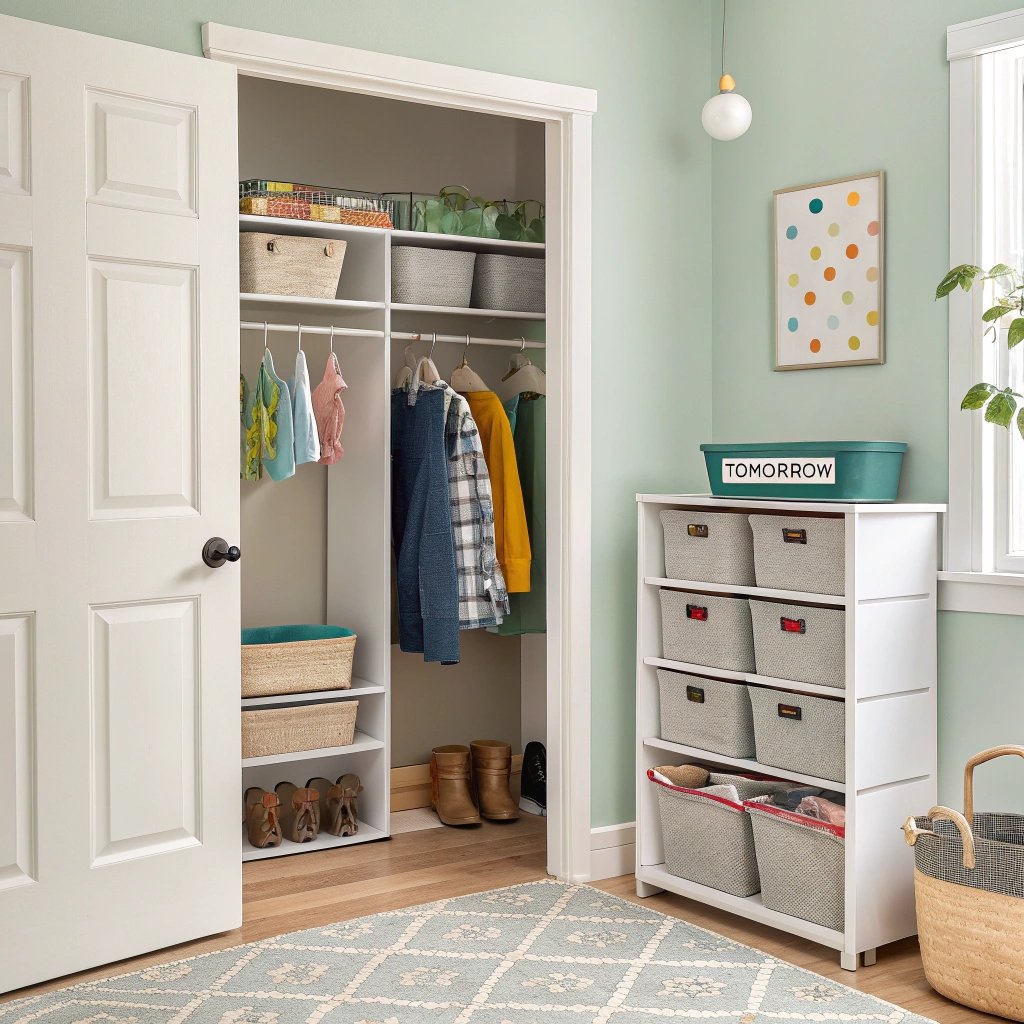
Design rails and shelves to move with changing heights. Use picture icons on bins for pre-readers and swap to word labels later.
Keep everyday outfits at kid-eye level and stash extras up high. Sturdy, easy-open hardware invites independence while protecting fingers and keeping cleanup realistic.
What makes this unique:
Add a “tomorrow hook” for outfit planning and a weekly caddy for activities (sports, swim, art). For shared closets, color the label tags rather than the bins so adults and kids can reassign spaces as needs shift.
Flexibility reduces chaos and spending because the system adapts as quickly as the wardrobe.
Quick Tips to Nail These Closet Organization Ideas
Choose one hero move (double-hang, shoe wall, or lighting) and support it with two small tweaks.
Keep a tight palette for hardware and bins; visual cohesion makes any closet feel larger.
Label everything and set a quarterly calendar reminder—maintenance is the secret to long-term calm.

